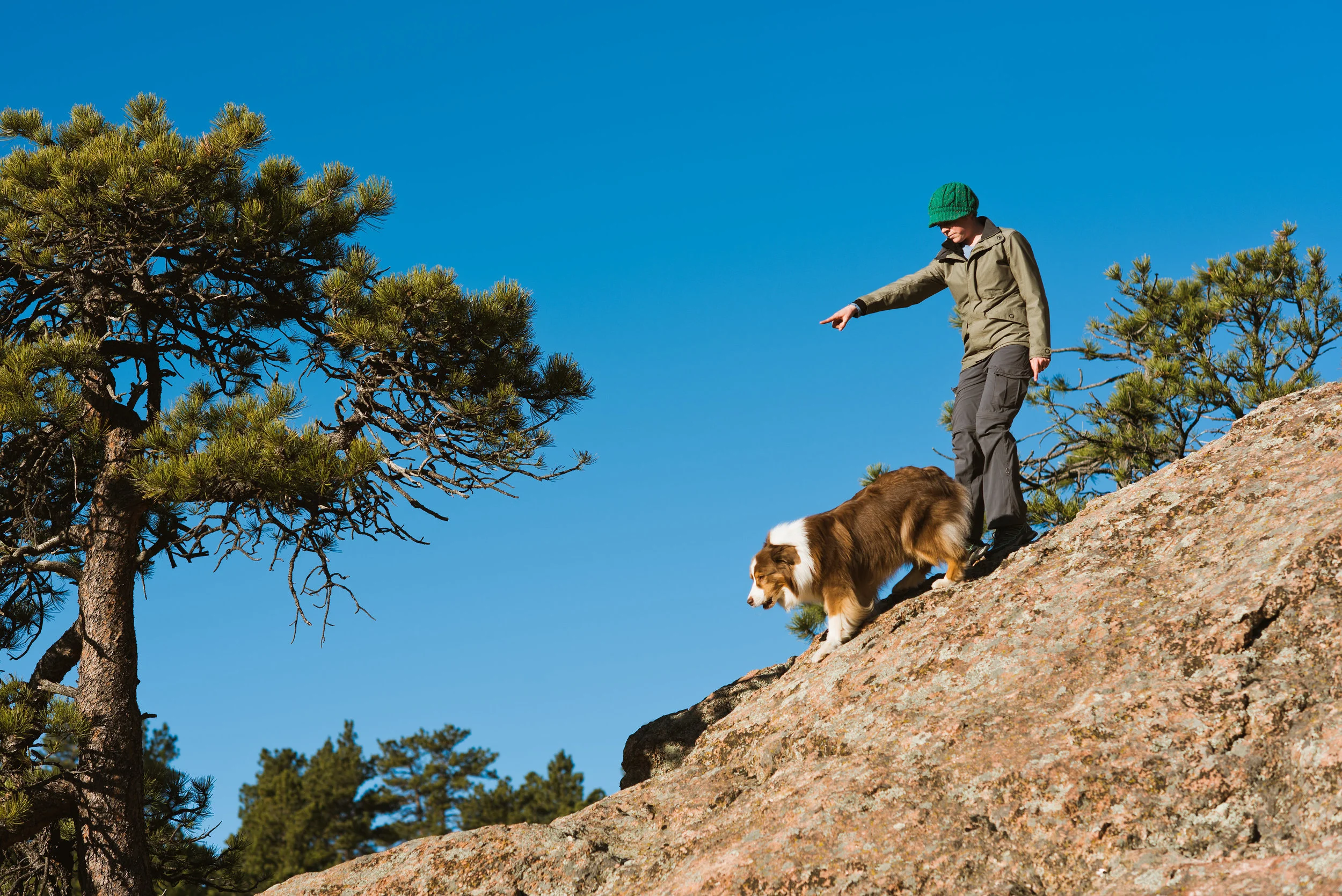Camping With Your Dog
Now that the leaves have turned, the bugs are gone, and the temperature is cooling, we’re all itching to get the dog, grab the tent and head up to the mountains! Camping with your dog is tons of fun and full of adventure. Many of the same skills that our dogs need to be successful while living in our homes also apply to camping, with the added difficulty of being out in an exciting environment with extra distractions and fewer management options than we have at our disposal in our homes. Below you will find tips to set your dog up for success as you enjoy all that nature has to offer this fall.
Teach a stationary “Settle” behavior! This behavior is useful in many different contexts, but especially in a camping setting. Having a reliable “Settle” cue helps to keep your dog out of the way of the camp stove while you’re cooking dinner, settle next to the fire, and gives them a clear spot to be in the tent while you get ready for bed at the end of the night. Check out this video playlist for instructions on how to get started on this skill with your dog! Remember to start in an easy environment and build up the difficulty from there.
Practice sleeping outside ahead of your first full camping trip. For dogs that are used to sleeping inside quiet houses, we have to remember that transitioning to sleeping outdoors in a tent or camper can come with a lot of extra little noises and smells. If you have the option to do so, try a test run close to home for your dog’s first outdoor sleeping experience. Make sure your dog has had plenty of exercise and is ready for bed before getting into the tent. When it’s time to get into the tent together, provide a designated sleeping space that is similar to where they might sleep inside your home (this is where you settle training comes in!). You may not always need to bring their big cushy dog bed along for your camping adventures, but especially for their first tent experience, we want to help them clearly understand that sleeping is the primary activity when inside the tent.
Teach your dog that people appearing suddenly is a cue to check in with you. Whether you are camping in a dispersed area or a busy campground, it’s important for your dog to calmly accept people and other dogs walking past your campsite. A barking dog can be an unpleasant surprise to anyone walking past, as well as yourself! With a little bit of proactive practice, you can help your dog be prepared for sudden visitors by teaching them that these are good experiences for them! Start by teaching your dog that when something happens in their environment, it is an opportunity to come and get a treat from you. Start this in an environment like the far end of a grocery store parking lot with your dog on-leash. When your dog sees someone walk into their field of view, give them a treat. Repeat this until your dog assumes that someone appearing suddenly is usually an opportunity to get something good from you! Then you can take this on the road and practice on hikes, at campsites, or any other environment you might find yourself in. Gradually build up the difficulty so that even if your dog is startled by a surprise hiker on an otherwise deserted backcountry campsite, they’re ready to reconnect with you quickly!
Ready to continue learning about camping with your dog? Click here for our Camping with Dogs Webinar! This webinar is taught by dog behavior and training experts who regularly camp with their dogs, and have coached many other teams to camping success. If you want additional support for you and your dog, we offer in-person Group Classes and Private Lessons in Fort Collins, Colorado, and virtual coaching right in the comfort of your home.





